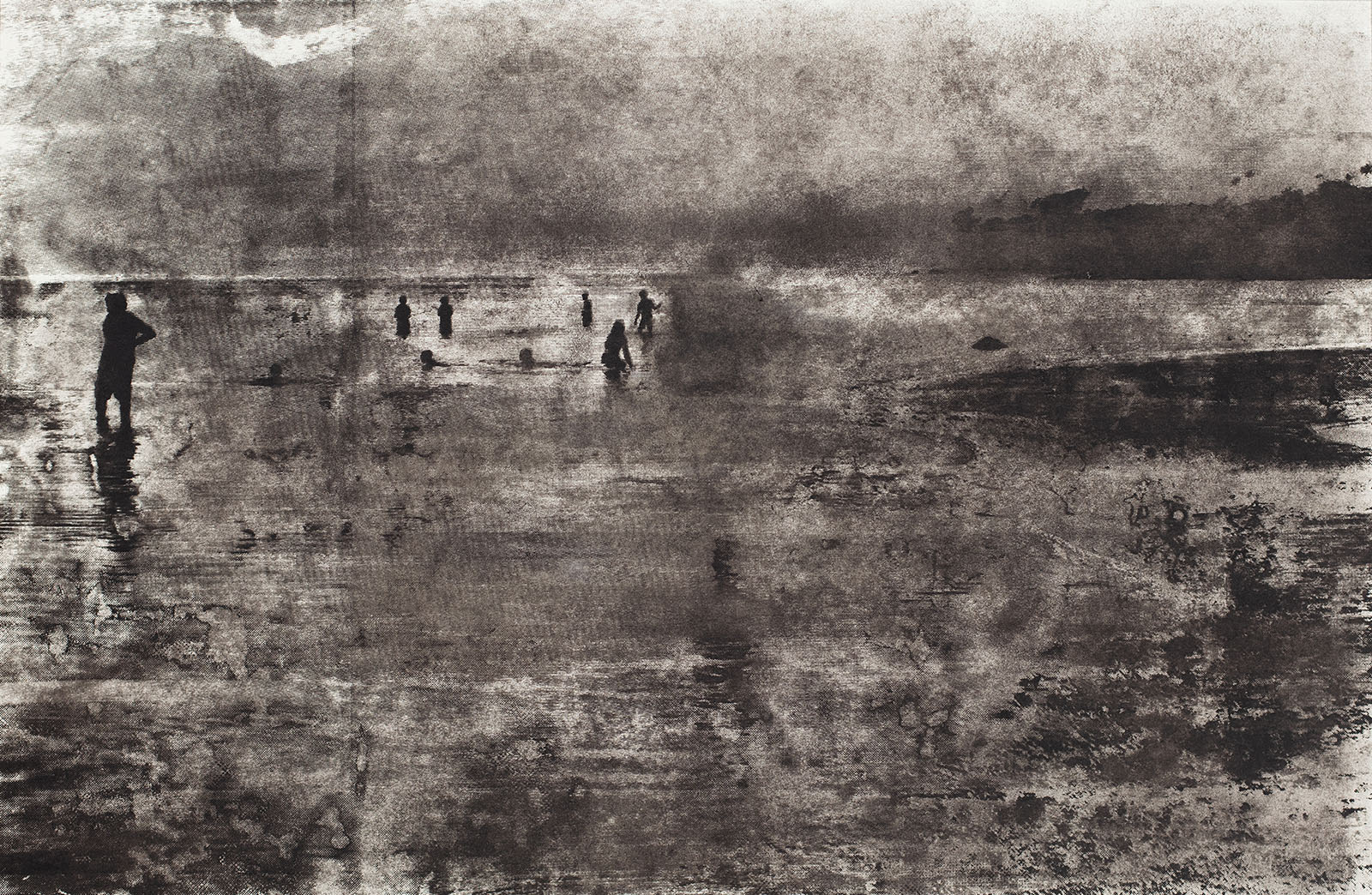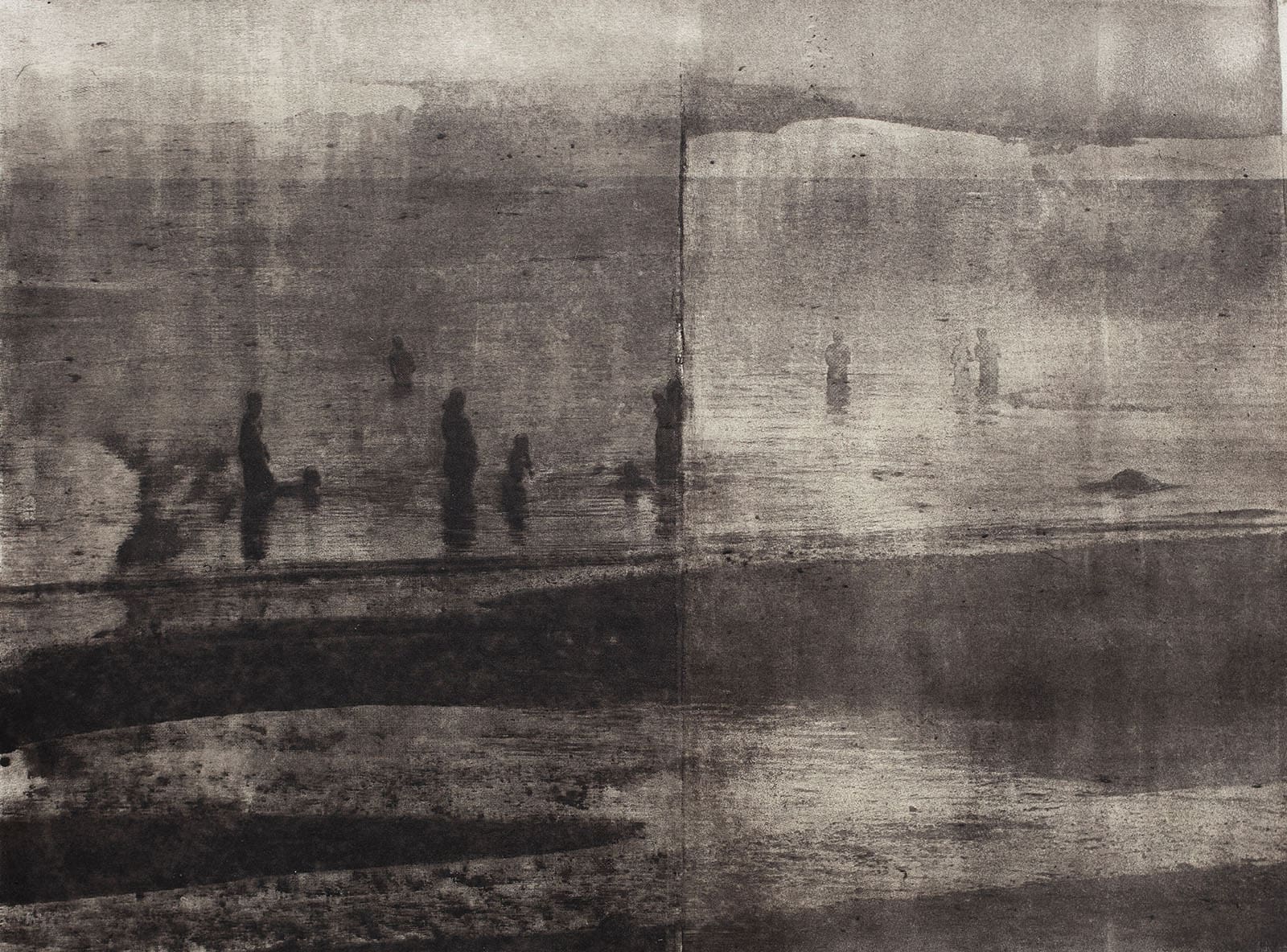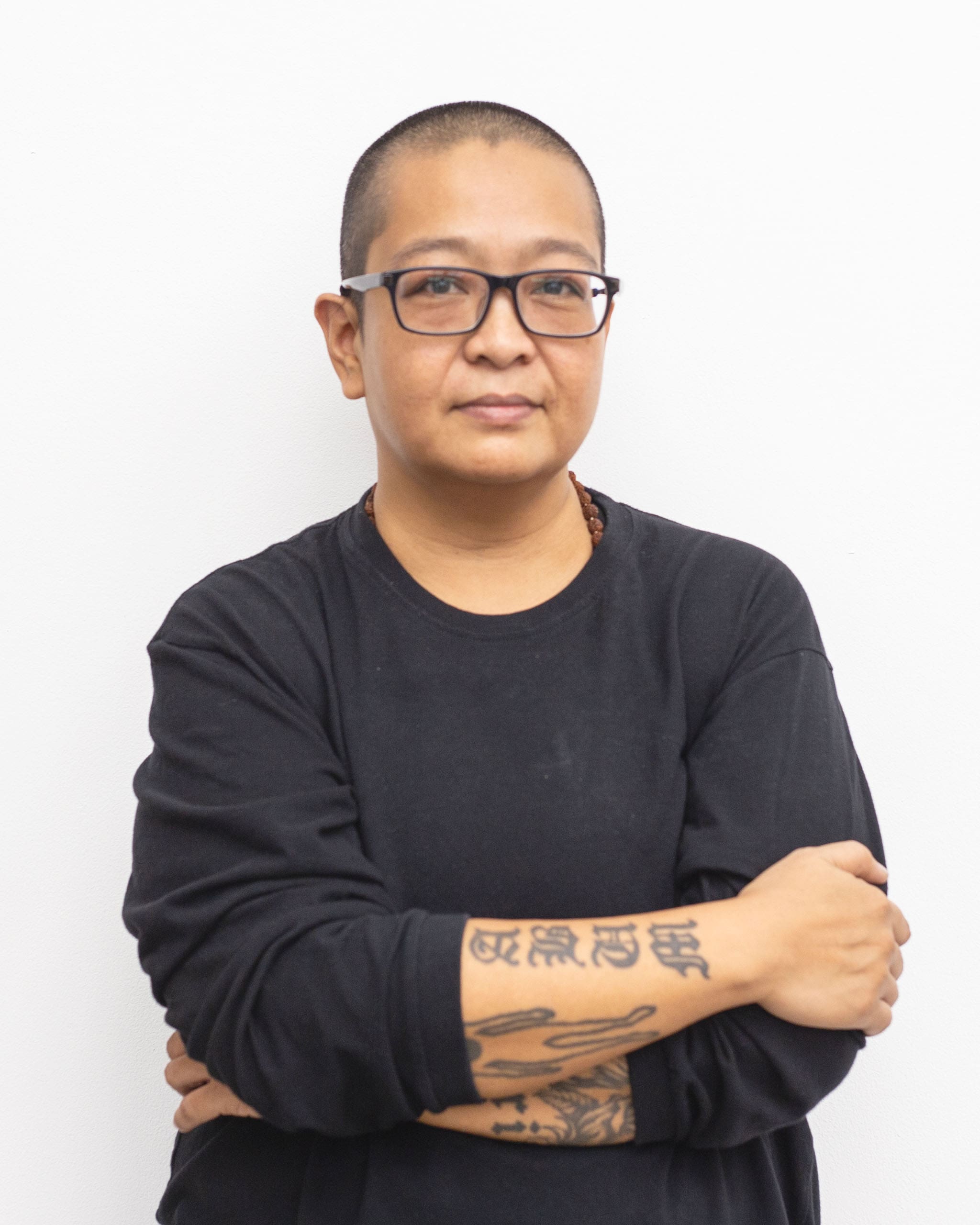Courtesy of Silverlens (Manila/New York)
The Bicol-based artist combines screen-printing with painting and photography to depict the landscapes and communities she encounters in her hometown.
Bulkan Mayon revealed its full glory, appearing serene despite its ongoing eruption. This was the riveting yet fearsome vista that greeted me, leaving Daraga Airport in Albay, where Maya Muñoz picked me up for our studio visit. Throughout our drive to Maya’s home in the provincial capital, Legazpi City, I couldn’t take my eyes off the volcano’s strikingly symmetrical profile. Renowned for having a perfectly shaped volcanic cone, Mayon flashed its captivating form at every turn, sometimes seeming to loom right over my face.
Maya’s studio is located within an expanse of fertile land, where her family grows fruits trees and vegetables and cares for over a dozen animals. She relocated here from Manila three years ago, and it proved to be an ideal place for artmaking. Colors here look oversaturated. Buildings, vehicles, and plants pop against the black volcanic earth, almost assaulting the eyes with their heavy yellows, stark reds, and neon pinks. “If the same objects were to be brought to Manila,” she says, “their colors would soften, become more pastel.”

For her last solo show at Silverlens Manila, held exactly four years ago in October 2019, I sent Maya some questions. The exhibit featured idyllic volcanic landscapes and gardens, painted in a manner she described as “savage,” collaged with cut up fabrics and infused with tropical neon colors. She elaborated that she wanted to depict delicate flowers “opposite to the paint handling, which is severe, dynamic and violent.” A scenography would be partially concealed “because it is an impossible piece, an incomplete memory, fleeting and cannot be coveted.” Groups of human figures were composed to convey a simultaneous sense of togetherness and loneliness. “There is a haunting desolation to crowded places… strangers who just so happen to be in the same place at the same time.” An underlying darkness constantly lurks within these pictures. “The greater the darkness, the more seductive it is. The principle of opposing elements is a governing force in creation. Things become clear through their opposites: light and dark, transient and lasting, joy and sadness, monstrosity and beauty. These are powerful emotions that I want to give to the works.” Such sensibilities continued over the next few years.
When Maya permanently moved to Legazpi in 2020, her forms took on simpler graphic shapes with defined outlines. “The light here is so sharp. It creates edges that almost cut,” she says. For her subject matter, she turned to colloquial scenery: folk Catholic practices, regional architecture, ordinary townsfolk, and the rich landscape, encompassing both the shores of the gulf and the mythical volcano. The artist first sought out materials available at the market, painting over striped and flowery vinyl tablecloths and glossy black vinyl jeepney floor covers.
Back then, she borrowed a delicious palette from another landscape, California, where she spent twenty impressionable years. Maya is a graduate of San Jose State University. “Inland Valley left its imprint on me. When I can’t see certain colors in a landscape, I tend to make them up, fusing my past and present.” She compares these artistic constructions to the way dreams are formed, an amalgamation of disparate times and places.
The transformative quality of natural light further changed Maya’s palette, most recently to monochromatic black and white, and led her to explore photography. Specifically, she wanted to experiment on how she could manipulate photographs and print them herself. She takes smartphone snapshots of scenes she encounters every day, saving them as her source material, describing these banal scenes as images “that soothe the brutal side of life.”

During our work break, we wound our way through the lush polyculture of Maya’s planting area, a veritable food forest, where the wafting scents of lemongrass, pandan and curry leaves would whet our appetites. We bought freshly caught fish at the seaside boulevard. From across the water, Mayon shimmered like a watercolor painting. Later, whilst maneuvering the city streets, I finally understood how colors register here. A fleet of tricycles appeared Pepto-Bismol pink, the yellow wall of a house reminded me of overripe mangoes and creeping roadside flowers were the harshest of reds. I realized why Maya eventually did away with all color.
In preparation for Drift and Vapor, her fourth solo show at Silverlens Manila which opens on Oct 5, Maya mined her photo archive, collected over many years, selecting images that she did not overthink, because “one becomes too invested in a great photo”. Instead, she is more interested in how the vagueness of a casual snapshot opens the viewer to more possibilities. “When a perfect photo is so pretty, it gets stuck at pretty.”
Her latest series portray more quietly abstracted environments, some with a cloudy bloom, as if ravaged through the patina of time. There are traces of empty tennis courts, bathers wading at the shore, skimboarders waiting for the waves. Rendered in luscious blacks, misty grays, and chalky whites, the images are grainy, mottled, faded, and streaked, intended to articulate evanescence, passing moments that amble along, impossible to hold still.
Photography is just the starting point of the artist’s complex and tedious process that evolved into what she defines as expanded printmaking. Her first task was to build a spacious darkroom. She also constructed her own massive exposure unit—a makeshift wooden casing installed with fluorescent lights. Next, she made large scale screen print stretchers. As I walked around her studio, I was struck by the exaggerated sizes of these screens, and always, by the stunning view of Mayon from her terrace.

In executing the prints, Maya is less satisfied with immaculate results and rather prefers the mess: water marks, mishaps, and other improvisations one associates with the playfulness of painting over the exacting methods of commercial photography and the rigid precision of traditional printmaking. Her process is a painter’s equivalent to analog photography’s dodge and burn. It is also an attempt to mimic a camera with a leak. To work with controlled accidents, she alters exposure times, pulls the paint only on certain areas, often scrapes off wet paint and prints the same image over it multiple times. She erases, rolls, and splashes paint, until the image attains her desired effects. “Giving importance to how an image is presented leads back to a lost idea and recontextualizes it.”
Photographs are often printed as flat and smooth objects. However, Maya wanted to achieve textured surface quality. Through raised textures and obscured images, she hopes to further engage viewers, drawing them in to imagine their own stories. It is an end-to-end creative endeavor in which the artist has control of each step to convey mood, emotion, and a sense of vastness. Virtuosity of technique translates to visual poetry. Consistent with the prosaicness of her subjects, she continues to ply vernacular methods and materials. After all, the screen print is more commonly employed by makers of posters and t-shirts. On this consonance of material and process, Maya asserts, “I want the work to be anchored in the very real.”
Drift and Vapor runs from October 5 to November 4, 2023 at Silverlens Manila, 2263 Don Chino Roces Avenue Ext, Makati City.
